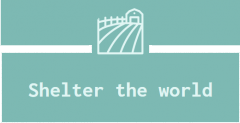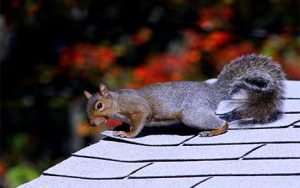Written by Dr. Joey Tang, DVM
Gastric Dilatation and Volvulus (GDV) is a life-threatening disorder that stems from bloating in dogs. Understanding this serious condition could save your four-legged family member’s life.
Gastric dilatation or “bloat” occurs when the stomach fills with a large amount of gas, food, and liquid. If these substances are not expelled, it can develop into a “volvulus,” which causes the stomach to twist. When this happens, both the entrance and the exit to the stomach are blocked, and emergency surgery is required.
Causes
Although GDV most commonly affects large male dogs with deep chests, it can happen to any canine. Specific causes are still unknown, but there are some triggers that seem to increase the risk. Immediate physical activity after ingesting a large meal or a lot of water can lead to a gas buildup. Stress is another factor, as recent studies have found that GDV occurs more frequently in dogs with hyperactive, fearful dispositions. Other factors include genetics and only eating one large meal a day as opposed to several smaller portions.
Symptoms
The most common presentation of bloating is multiple attempts at retching or attempting to vomit that is non-productive (dry heaving). Also distension and pain of the abdomen is quite common due to the discomfort. Gentle tapping just behind the last rib often produces a drum-like sound. You may also notice your dog’s breathing is labored, as the distended stomach puts pressure on the diaphragm. Eventually, the swollen stomach constricts the larger blood vessels in the abdomen. Deprivation of blood and oxygen to vital tissues causes systemic shock, and the dog will collapse on his or her side. This is fatal if not treated emergently.
Treatment
GDV requires immediate veterinary intervention to reduce pressure on the stomach and internal organs. First, the dog is treated for shock with intravenous fluids until he or she is stable enough for anesthesia. In addition to stabilizing and treating shock, another first step is to decrease the bloat itself by either passing a stomach tube or sometimes a large needle. Once the pressure is relieved, abdominal surgery is performed to untwist the stomach, remove any dead tissues, and prevent future recurrences. Survival rate depends on the length and severity of GDV, the degree of shock, and the overall health and age of the dog.
Prevention
It’s not possible to tell the difference between dilatation (bloat) and volvulus (twist) based on appearance alone. Therefore, a vet visit is required for x-rays and other diagnostic tests if bloating occurs.
The most effective way to prevent GDV is a gastropexy – a surgical procedure that attaches the stomach to the body wall so that it can’t twist. It can typically be performed at the time of spay/neuter for dogs that are predisposed. Speak to your veterinarian to find out if it’s right for your dog. At home, a healthy diet with smaller portions throughout the day is recommended to help prevent bloating, as well as incorporating slow feeders if your dog tends to down their food quickly. Ensuring your dog has time for proper digestion before physical activity means less gas buildup. And if your dog is prone to anxiety, identifying and reducing stressors could prevent a much scarier situation for you and your best friend down the road.
Gastric Dilatation and Volvulus (GDV), or “bloat,” can be life-threatening to your canine companion. If you suspect your dog may be experiencing GDV, bring them to their veterinarian for immediate intervention. While the specific causes are unknown, there are still preventative measures that can be taken to reduce the risk of GDV in your dog.
If this information was helpful, please help us continue to educate about pet health and well-being by making a donation. As a registered charity that does not receive annual government funding, the Ontario SPCA depends on the generosity of donors to change the lives of animals in need.
The post What is ‘bloat’ and why is it so dangerous for dogs? appeared first on Ontario SPCA and Humane Society.
Leave a comment




